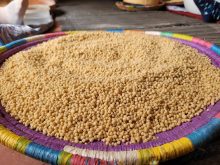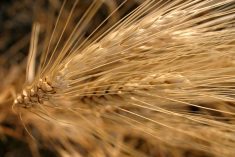SASKATOON — An Italian farm group is once again besmirching the reputation of imported Canadian durum.
Coldiretti contends that Canada, Turkey and Russia are taking turns flooding the Italian market with durum, said a report published by UkrAgroConsult.
Coldiretti said durum imports increased by 28 per cent in the first four months of 2025 compared to the same period last year, which is causing local prices to collapse.
Read Also

Pakistan reopens its doors to Canadian canola
Pakistan reopens its doors to Canadian canola after a three-year hiatus.
Canadian exports to Italy have doubled in that same period.
Italian farmers are getting almost 20 euros ($32) per tonne less for their durum than they were last year, despite a below average harvest.
“The flow of imported durum wheat into Italy is a real invasion,” said Coldiretti in the UkrAgroConult story.
The group noted that Canadian durum is treated with glyphosate before harvest, a practice that is prohibited in Italy.
Leif Carlson, director of market intelligence and trade policy with Cereals Canada, said this isn’t the first time that Coldiretti has set its sights on Canada.
“It’s always disappointing to hear these sorts of claims made against Canadian durum,” said Carlson.
“We know that our farming practices are sound, and our grain is safe.”
Italy purchased 807,500 tonnes of Canadian durum during the first 11 months of 2024-25, up from 387,600 tonnes from the same time a year ago.
The country was the third biggest buyer of the crop for that period behind Algeria and Morocco. Some years it is the top buyer of Canadian durum.
But despite the big increase in imports from Canada, Carlson thinks there is another reason for the slumping prices in the Italian market.
The European Commission (EC) is forecasting 8.3 million tonnes of European Union durum production in 2025, up 1.1 million tonnes from last year.
“That’s a big change,” he said.
Rosella Polito, an Italian farmer and independent durum wheat market analyst working in partnership with Black Silo Commodity Consulting, agrees that the blame for slumping prices in Italy lies elsewhere.
“Coldiretti’s claims about imports are simply scapegoating and bad propaganda, as well as pure misinformation about how the global durum wheat market really works,” said a transcript of an email response she provided to The Western Producer.
But she agreed that Italian farmers are experiencing “severe difficulties” due to high production costs and unprofitable prices, to the point where next year’s acreage could be down.
Polito said there is a lot of misinformation and bad press about the quality of imported Canadian wheat in Italy.
The EU imposes and enforces maximum glyphosate residue limits on imported durum, and a ship has never been turned away for exceeding those limits.
“Once again, Coldiretti is waging a baseless smear campaign against Canadian wheat, fomenting misinformation on the subject,” said the author of Black Silo’s global durum report.
Italy had a strong rebound in production this year, although the exact number is up for debate.
Coldiretti contends Italian farmers harvested 3.7 million tonnes. The European Commission is forecasting 4.25 million tonnes.
Polito thinks the truth lies somewhere in the middle at around four million tonnes.
Despite the strong harvest there could be good demand for Canadian imports if the price and quality are right, she said.
North Africa is the other big buyer of Canadian durum. The region also had a good harvest in 2025, which could limit demand from that market.
However, Carlson noted that many buyers in Italy and Morocco value Canadian durum for its good gluten properties and bright yellow colour and will still import it regardless of what happens with domestic production.
Polito expects Morocco’s imports of Canadian durum to remain high if Canadian quality is good.
There should also be good demand from Algeria.
But Tunisia had excellent production, so imports will likely be down in that market, she said.
















